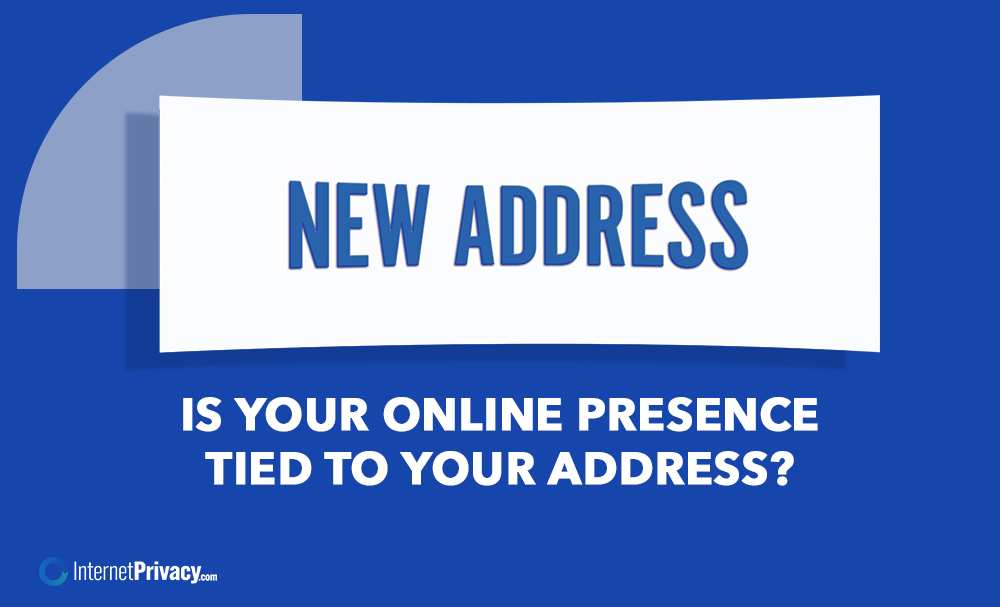Is Your Online Presence Tied to Your Address?

It started with a simple online search—just type your name into Google. But what popped up surprised you: old addresses, forgotten social media accounts, outdated directory listings.
Your online presence isn’t just about what you post. It’s about what others can find, including personal details, such as your physical location. For small businesses, entrepreneurs, and professionals alike, online presence management must consist of safeguarding your privacy. Because even something as simple as an address can disrupt your brand identity, influence search engine results, and erode customer trust.
What Is Online Presence, and Why Does It Matter?
Your online presence encompasses the collective existence of everything associated with your name or business name across digital platforms. That includes:
- Website content and web design
- Social media posts and social media feeds
- Directory listings and search engine results
- Guest posts, online directories, and online advertising
- Customer feedback and user-generated content
A strong online presence helps improve search rankings, build customer trust, and attract both current and potential customers. It also enhances online visibility, drives website traffic, and provides a competitive edge. For local businesses and large brands alike, this presence spans social media platforms, email marketing campaigns, and other channels, including mobile devices and paid advertising.
Without proper online presence management, these digital touchpoints can become disjointed, outdated, or inaccurate, harming your credibility with social media users and potential customers.
Why Your Physical Location Still Shows Up—and Why It Matters
Here’s where privacy and online reputation intersect. Your physical location is often embedded into your digital footprint through social media accounts, local search listings, and marketing strategies. If you don’t manage it, your address can:
- Appear in online directories with outdated or incorrect information
- Show up in search results tied to negative reviews or unrelated businesses
- Be scraped and republished across other sites by data brokers
This affects more than just privacy—it impacts your credibility. Consumers rely on accurate information when conducting online searches. If your company’s online profile links to an old or misleading address, it can damage your brand identity and confuse your target market.
Inconsistent business information can lead to search engines penalizing your visibility. This can lead to missed opportunities, poor customer feedback, and lower performance analysis metrics in tools like Google Analytics.
Common Online Privacy Mistakes That Hurt Your Online Presence
In the rush to go live or launch a product, many small businesses and professionals overlook the importance of privacy. Here are a few of the biggest missteps:
- Using a home address in your business online profile
- Forgetting to update online directories after relocating
- Not locking down personal details in social media strategy
- Letting old email marketing campaigns continue linking to outdated content
- Failing to monitor search engine results for location-based inaccuracies
Each of these missteps risks your online reputation and privacy. Worse, they create a fragmented digital footprint that lowers search rankings and makes your brand look outdated.
How to Manage Your Address for a Stronger, Safer Online Presence
1. Conduct a Digital Audit
Start by running an online search using your name, business name, and previous addresses. Make note of which social platforms, online directories, and search engines show old or inaccurate information. Use Google Analytics and other performance tools to evaluate what’s driving traffic and where your business information is being found online.
2. Clean Up Directory Listings
Online directories are key components of local search and digital presence. Use tools like Moz Local to update your business name, physical location, and contact info across all major platforms. Inconsistent listings confuse search engines and damage your local SEO efforts.
3. Use a Virtual Address or P.O. Box
This is especially important for small businesses and freelancers. A virtual address helps protect your physical location, adds professionalism, and separates your personal life from your professional brand. It enhances customer trust and supports a more effective online presence.
4. Create High-Quality Content to Strengthen Your Online Reputation
Don’t let outdated search results dominate your brand. Create content that’s relevant to your niche audiences—like blog posts, guest posts, and landing pages optimized with relevant keywords. High-quality content helps push down irrelevant results and boosts your online visibility.
5. Leverage Customizable Templates for Brand Consistency
Your social media marketing and email marketing efforts should use customizable templates for a clean, branded look. Consistency across digital channels—including website content, social media feeds, and email marketing campaigns—builds trust and improves recognition among your target audience.
6. Check Privacy Settings on Social Media Channels
Audit each social media platform you use. Restrict public access to your contact details, especially your physical location. Regularly review who can view, tag, or mention your business name or personal info in social media posts.
7. Monitor Search Engine Results and Social Mentions
Set up alerts using Google Alerts or brand monitoring tools. Watch for online search results, including outdated addresses, negative reviews, or inaccurate customer feedback. This enables you to act quickly and maintain a strong online presence.
8. Be Strategic with Digital Communications
Ensure all your communications—from SMS marketing to newsletter campaigns—are current. Outdated contact info in email blasts or social media accounts can weaken your credibility with current and potential customers.
9. Measure and Adjust
Use performance analysis tools to track online advertising metrics, search traffic, and engagement levels. Identify which content is compelling and which digital platforms are underperforming. A strong online presence is maintained with ongoing adjustments.
Final Thoughts: Privacy and Presence Go Hand in Hand
Managing your online presence is about more than just visibility—it’s about protecting your privacy while controlling your brand story. Your physical location should support your marketing strategies, not expose you to unnecessary risk.
An effective online presence means knowing what’s out there, updating it regularly, and ensuring the right people are seeing the right message. With the right social media strategy, website content, and digital tools, you can reach a wider audience while staying secure.





